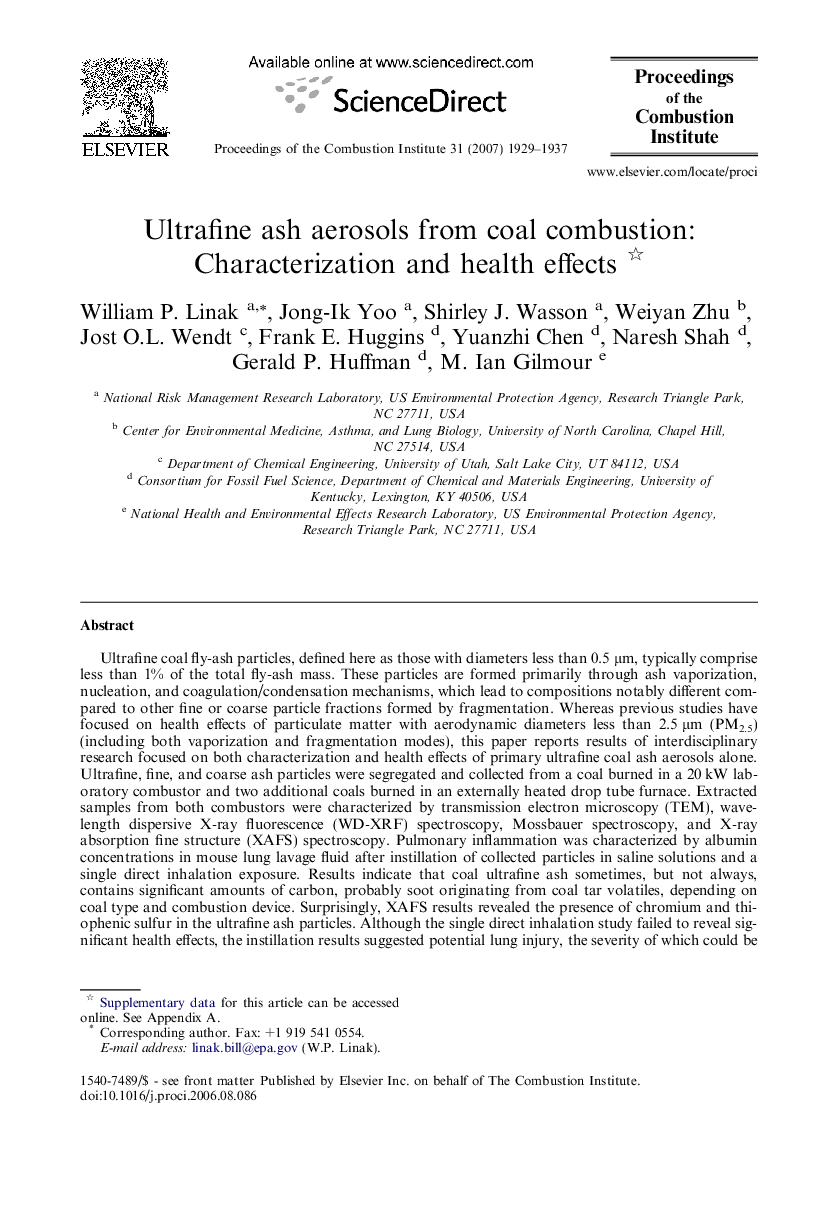| کد مقاله | کد نشریه | سال انتشار | مقاله انگلیسی | نسخه تمام متن |
|---|---|---|---|---|
| 241236 | 1427928 | 2007 | 9 صفحه PDF | دانلود رایگان |

Ultrafine coal fly-ash particles, defined here as those with diameters less than 0.5 μm, typically comprise less than 1% of the total fly-ash mass. These particles are formed primarily through ash vaporization, nucleation, and coagulation/condensation mechanisms, which lead to compositions notably different compared to other fine or coarse particle fractions formed by fragmentation. Whereas previous studies have focused on health effects of particulate matter with aerodynamic diameters less than 2.5 μm (PM2.5) (including both vaporization and fragmentation modes), this paper reports results of interdisciplinary research focused on both characterization and health effects of primary ultrafine coal ash aerosols alone. Ultrafine, fine, and coarse ash particles were segregated and collected from a coal burned in a 20 kW laboratory combustor and two additional coals burned in an externally heated drop tube furnace. Extracted samples from both combustors were characterized by transmission electron microscopy (TEM), wavelength dispersive X-ray fluorescence (WD-XRF) spectroscopy, Mossbauer spectroscopy, and X-ray absorption fine structure (XAFS) spectroscopy. Pulmonary inflammation was characterized by albumin concentrations in mouse lung lavage fluid after instillation of collected particles in saline solutions and a single direct inhalation exposure. Results indicate that coal ultrafine ash sometimes, but not always, contains significant amounts of carbon, probably soot originating from coal tar volatiles, depending on coal type and combustion device. Surprisingly, XAFS results revealed the presence of chromium and thiophenic sulfur in the ultrafine ash particles. Although the single direct inhalation study failed to reveal significant health effects, the instillation results suggested potential lung injury, the severity of which could be correlated with the carbon (soot) content of the ultrafines. Further, this increased toxicity is consistent with theories in which the presence of carbon mediates transition metal (i.e., Fe) complexes, as revealed in this work by TEM and XAFS spectroscopy, promoting reactive oxygen species, oxidation–reduction cycling, and oxidative stress.
Journal: Proceedings of the Combustion Institute - Volume 31, Issue 2, January 2007, Pages 1929–1937